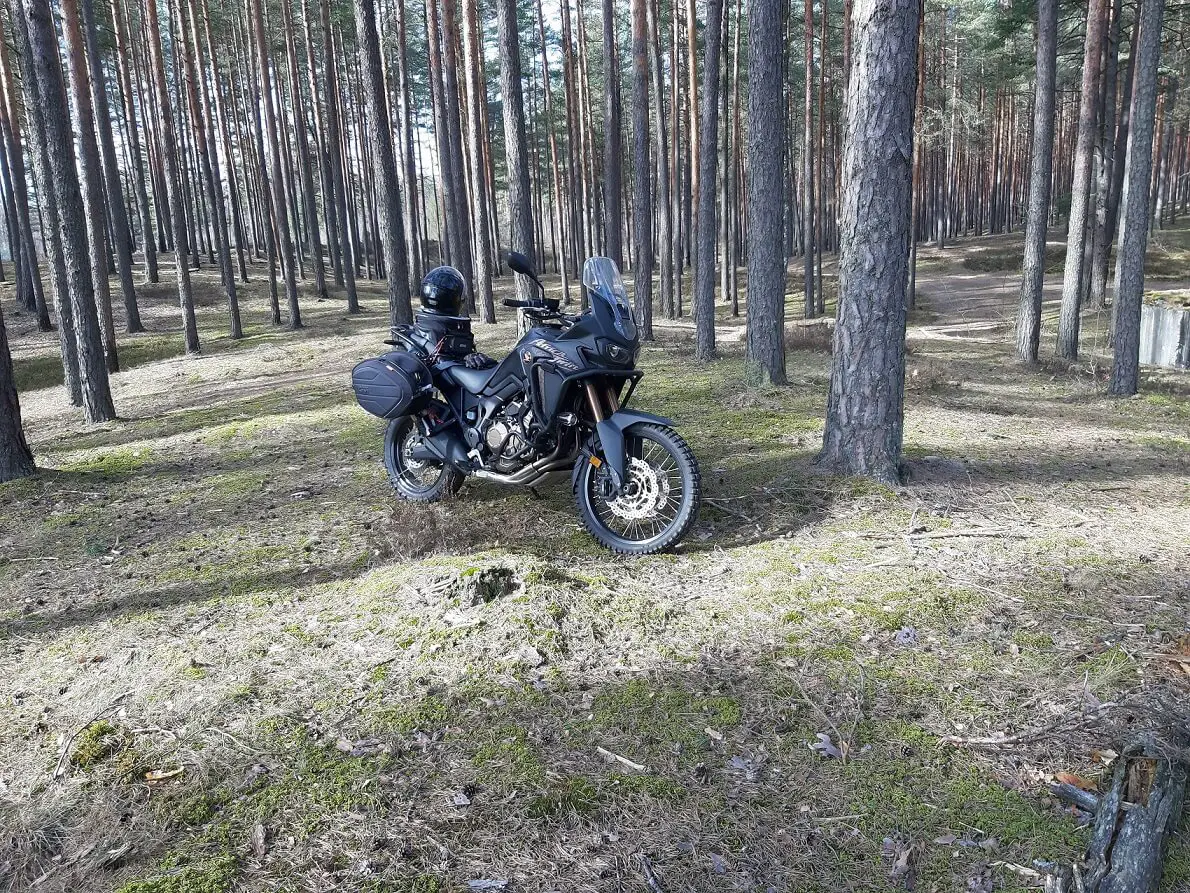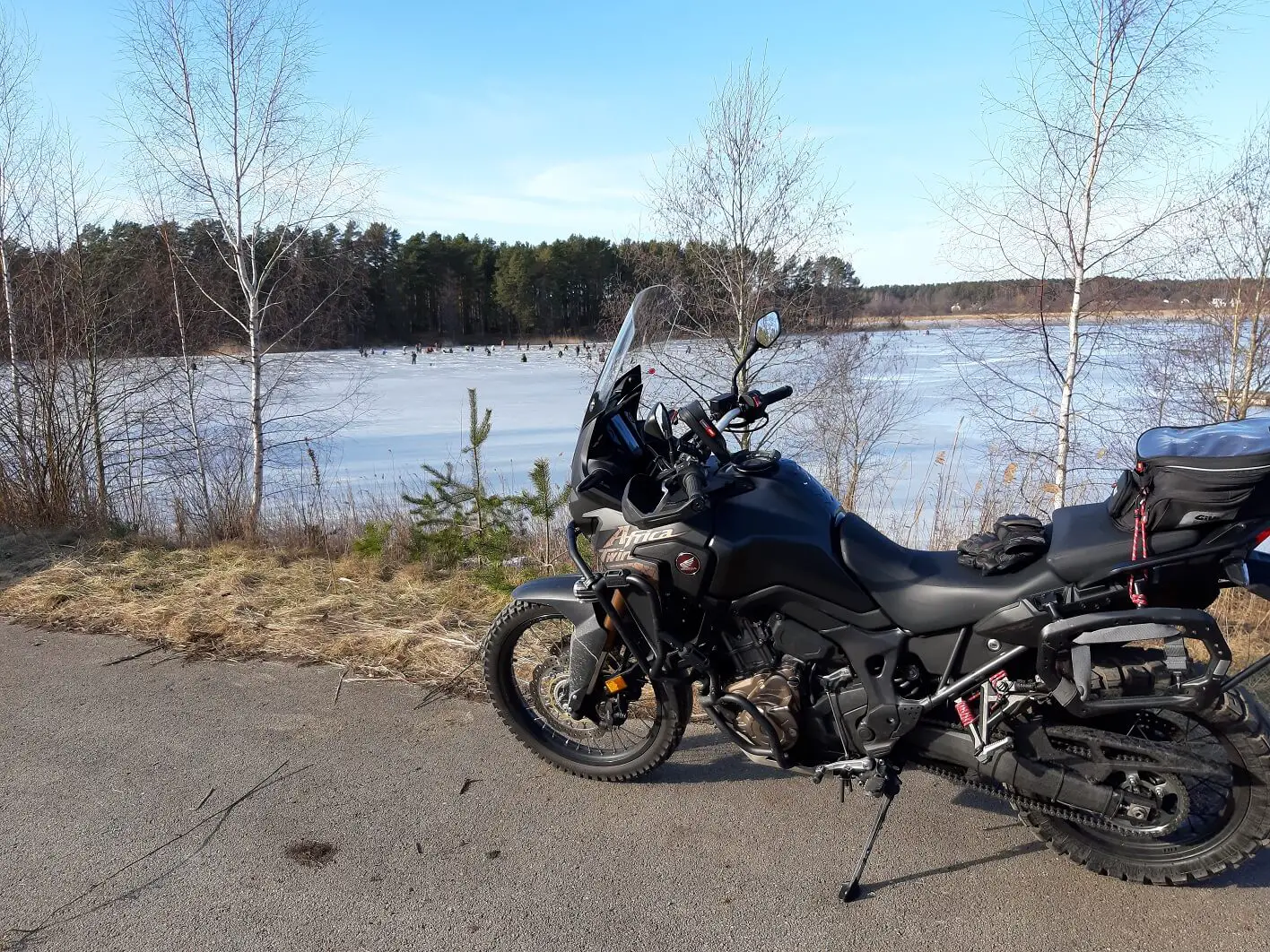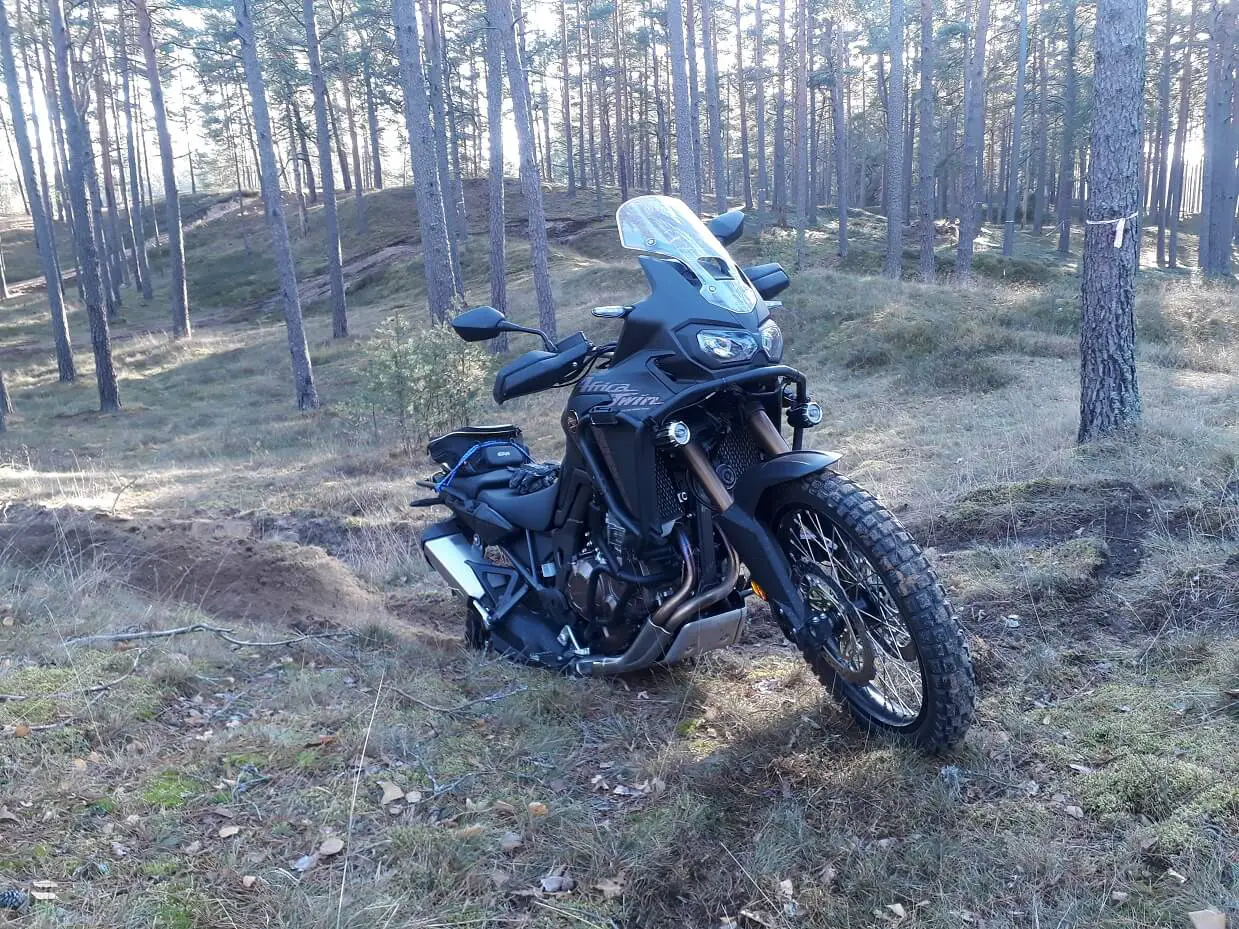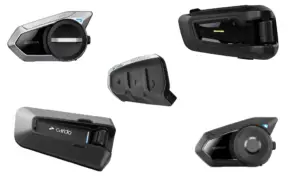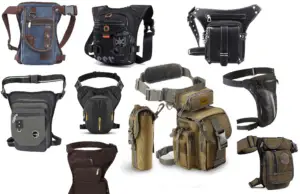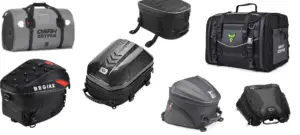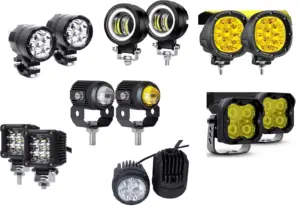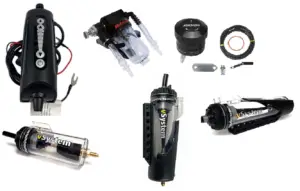This is an owner’s review of the 2018 CRF1000 Africa Twin with manual transmission after 100k km (65k miles) and 24 months of ownership.
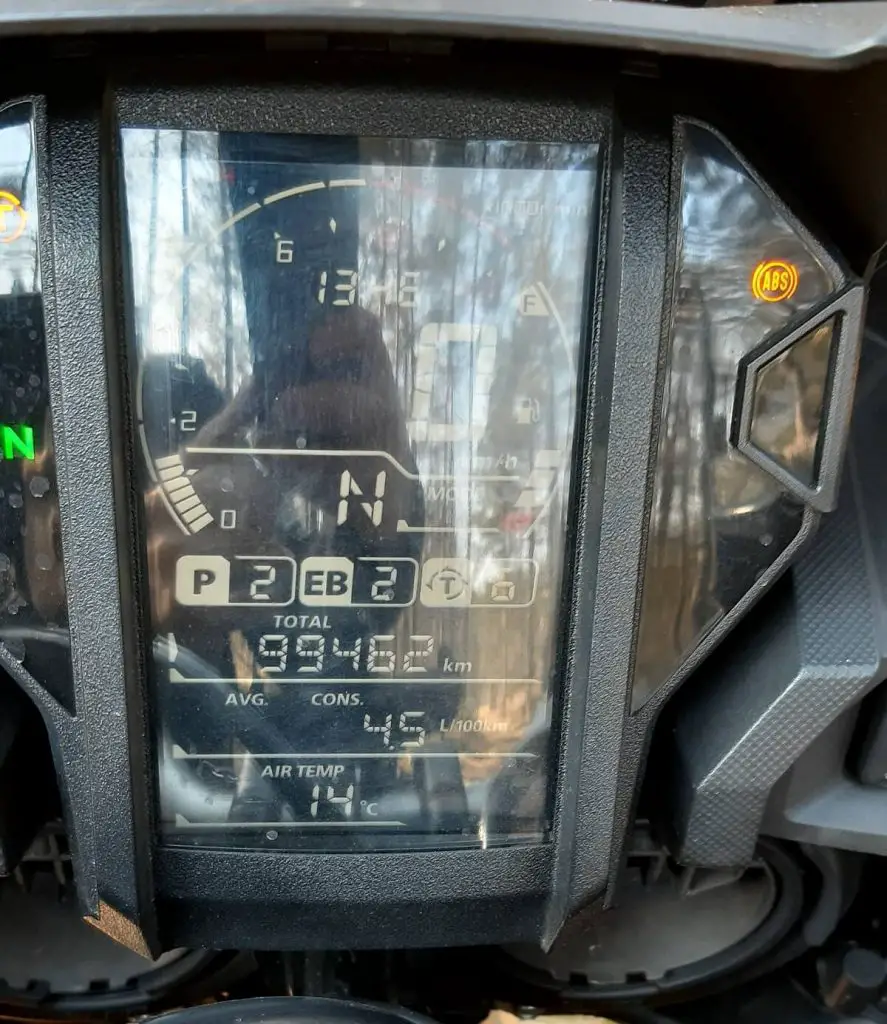
The reason I decided to buy an Africa Twin was a desire for more comfort on poor-quality roads. I wanted to explore the countryside in my area and most backroads are gravel or poorly maintained asphalt – which is even worse. The bike I owned prior to AT was NC750X, which simply is not suited for long offroad rides due to having a budget road-biased chassis.
Upgrading to the Africa Twin made a lot of sense in my head at the time. As of today I still believe that I made the right decision.
Here is a photo of my Africa Twin when I picked it up from the dealer.
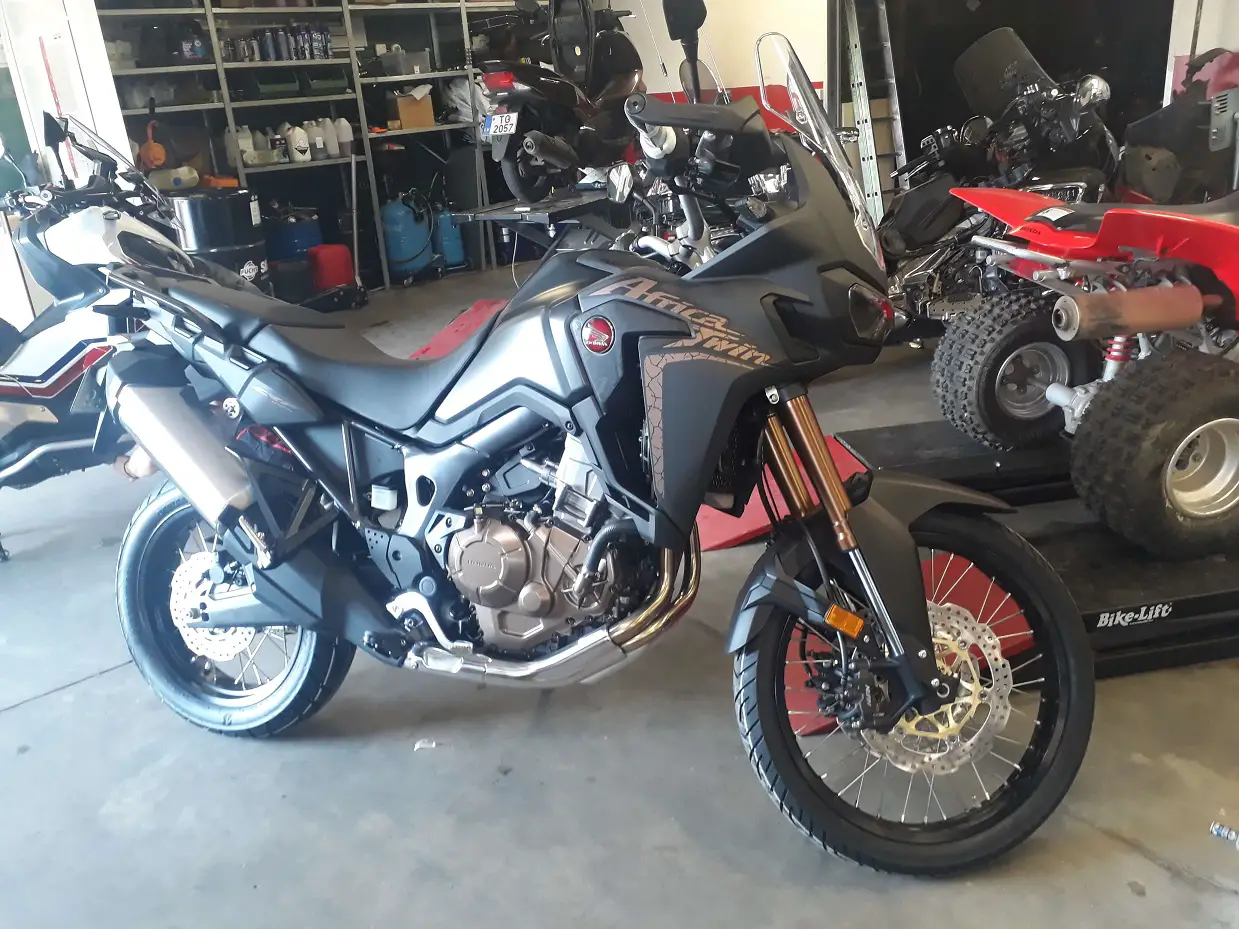
Sorry for the image quality, at the time I did not know that I would have a blog and would make a review of my bike. Also, I didn’t want the bike in black color in the beginning, however, Honda told me that it is either black, or I would have to wait 8 weeks to get the red or white color scheme. I decided that I didn’t want to wait.
When I got the bike I was super happy. The bike felt so much better in all regards compared to the previous motorcycles that I owned. I managed to break in my new Africa Twin in just 2 days by riding 1000 km (600 miles). Honda mechanics were really surprised when I came to them on Monday morning for the 1000 km service after collecting the bike on Friday evening.
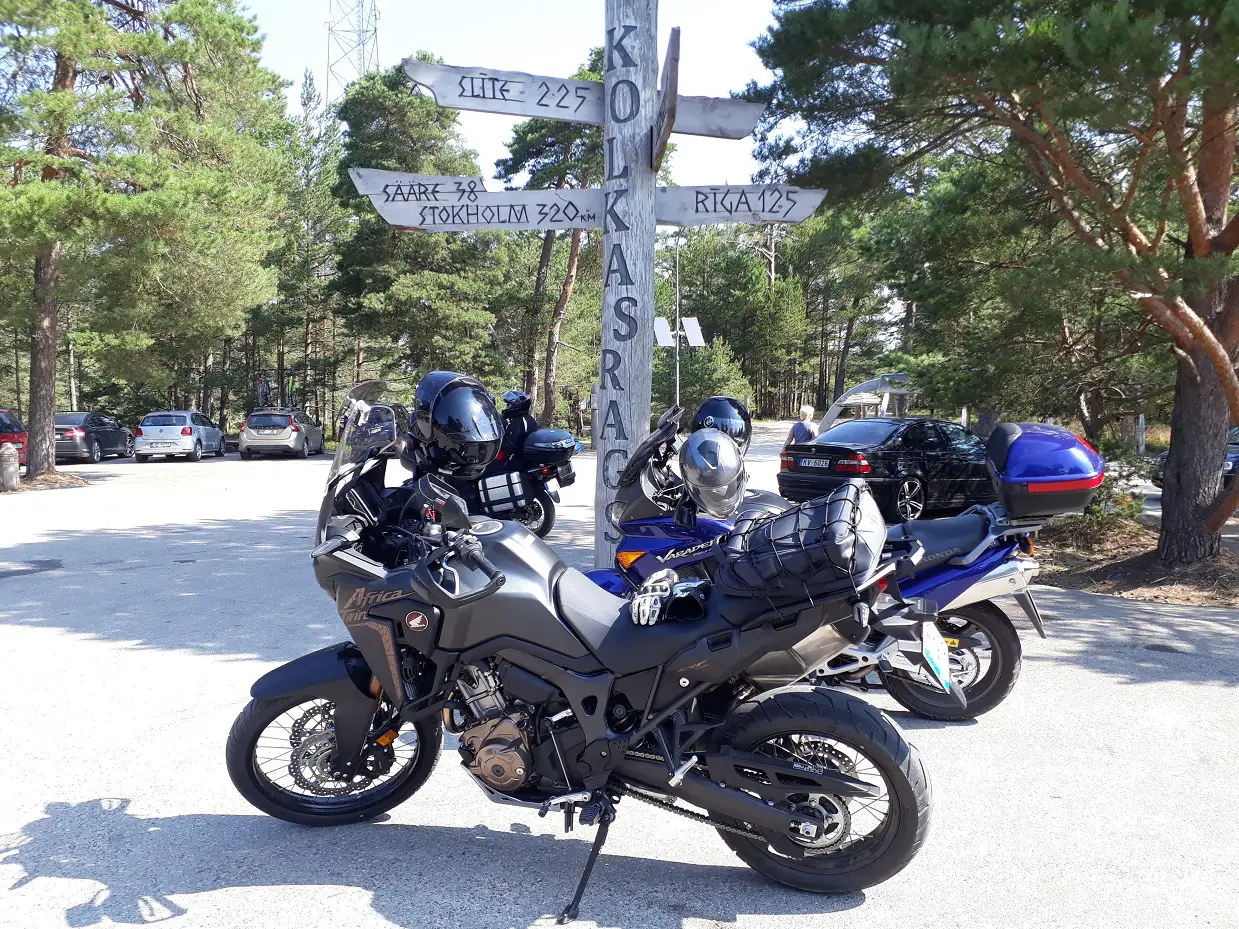
Contents
Africa Twin off-road
Because buying Africa Twin was a spontaneous decision, I didn’t order any engine guards and other accessories in advance. As a result, I was afraid of going off-road during the first month while I was waiting for engine guards to come.
I decided to go with Givi Upper and Givi Lower engine guards. They did an amazing job of protecting the bike during inevitable off-road falls.
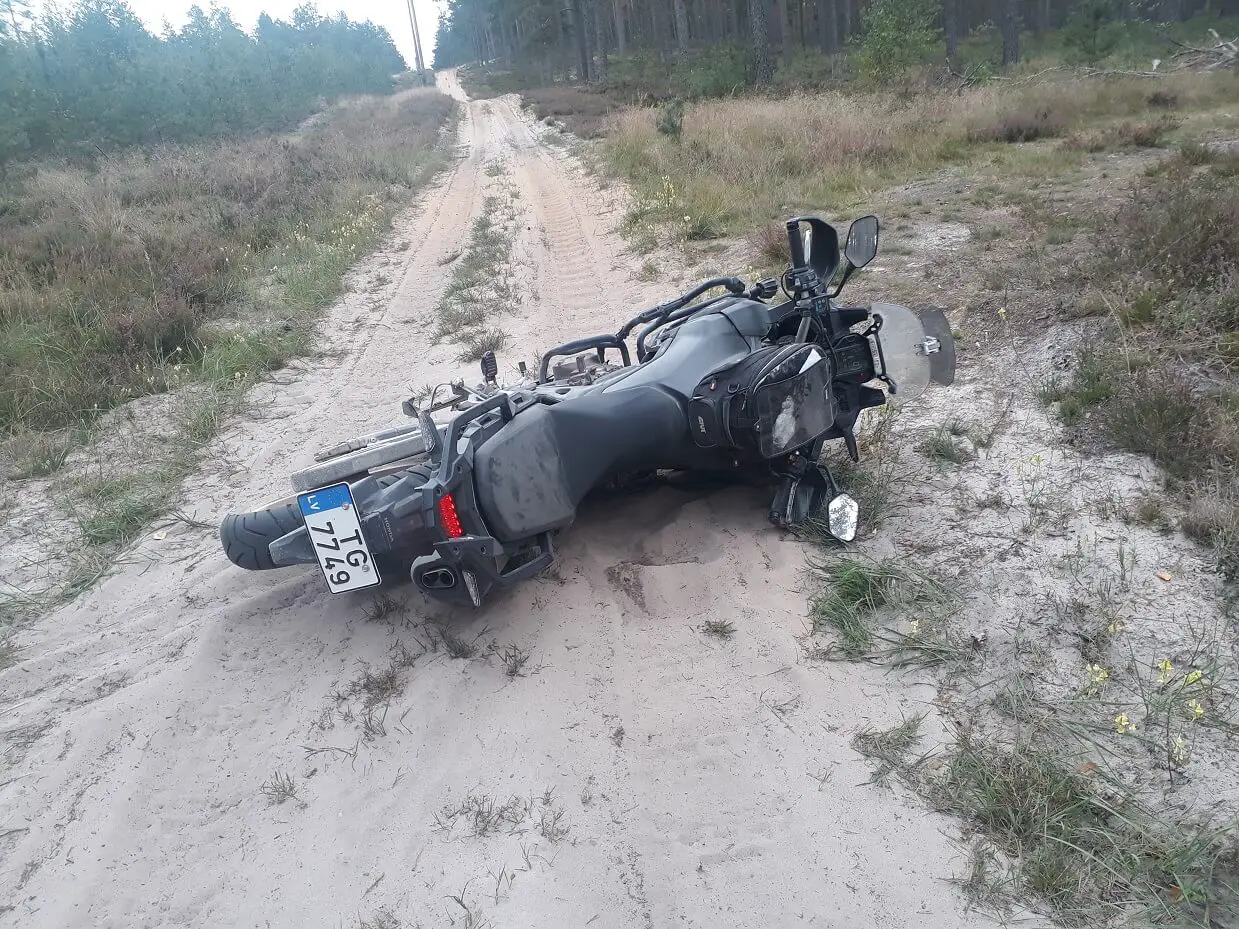
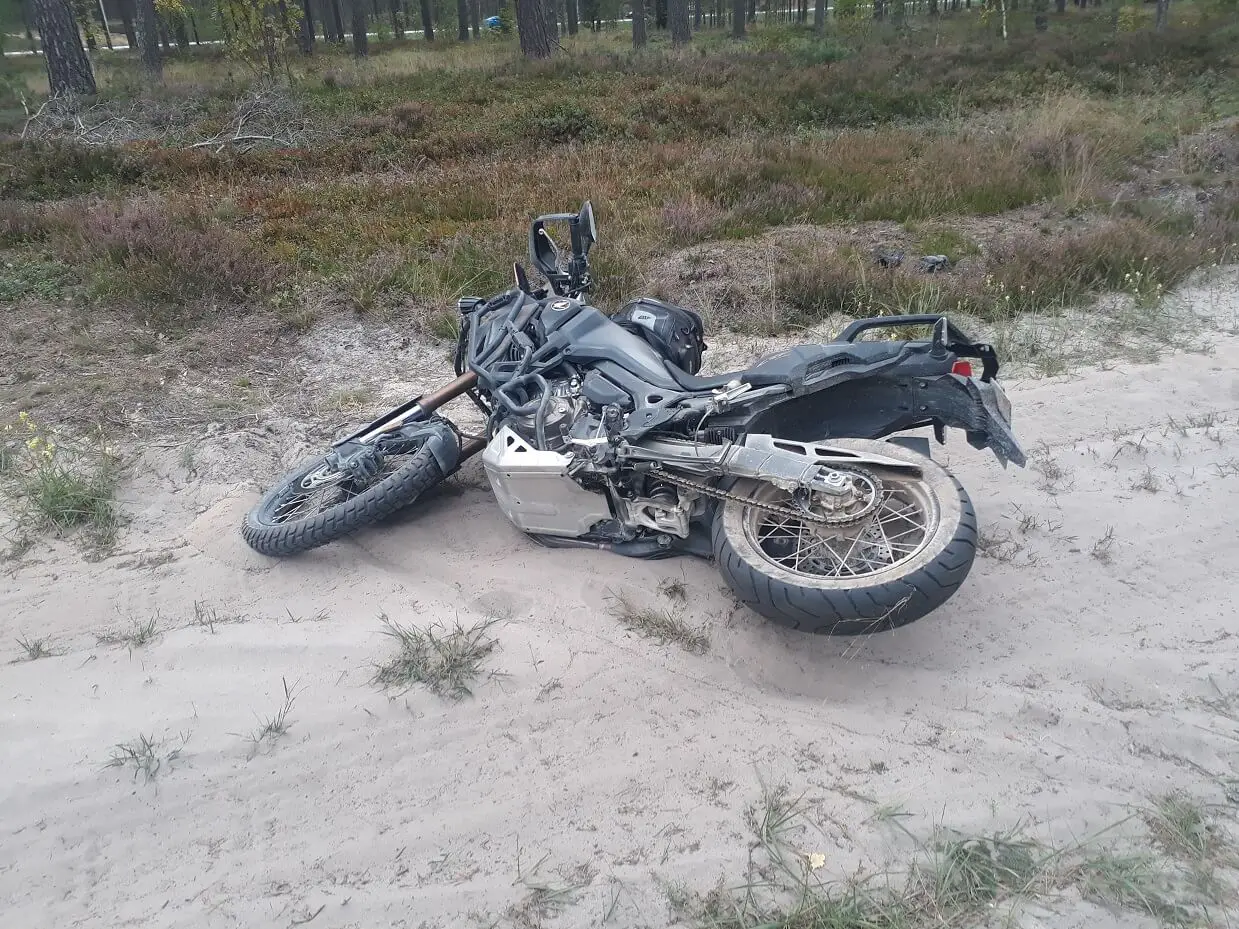
I was a total noob on unpaved roads and knew very little about offroad motorcycle handling. As soon as I installed proper 50/50 tires I felt like an offroad god compared to the time when I had stock tires installed.
I managed to drop my bike over 100 times in the forest over 2 years of ownership. Eventually, I added SW Moteck pannier holders, which did an awesome job of protecting the exhaust and other rear parts. The single part that I broke during all these falls was the plastic handguards. I should have installed proper aluminum handguards, however, I was lucky not to break the clutch or brake leavers during future crashes.
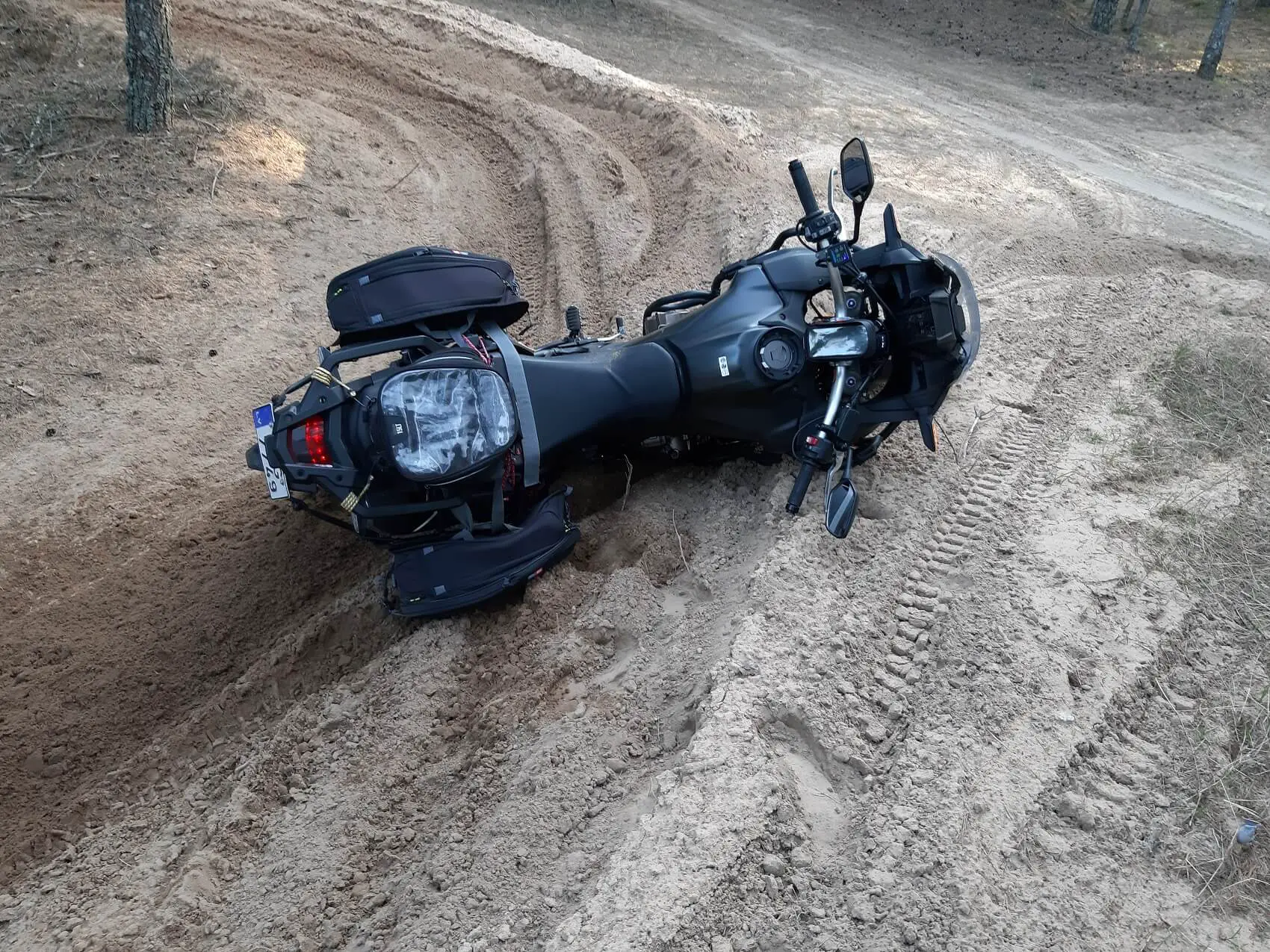
Even though Givi crash bars probably saved me a lot of money, I wouldn’t choose them again. The problem is that most crashes happened at slow speed or when I stopped or stalled the bike in a position I wasn’t able to reach to the ground. I believe that much smaller and lighter crash bars would do an equally good job at protecting plastics and engine casings while being lighter. Weight saving is important when going offroad. I would go with SW Motech or Alt Rider crash bars today. I have to admit that I really like how Givi crash bars look on the bike though.
2018 CRF1000 with manual transmission has a wet weight of 232 kg. Adding an extra 20 kg in the form of crash bars and other accessories is a bad idea and here is why. I did a lot of forest riding alone and every time I got stuck I spent around 1 hour getting my bike unstuck. Sometimes it meant that I had to put the bike on the side and drag it for 50 meters. Mainly that happened when I got to a dead-end while going downhill and turning around was impossible due to sand or mud. And trust me -dragging 250 kgs for 50 meters on sand uphill is not an easy task.
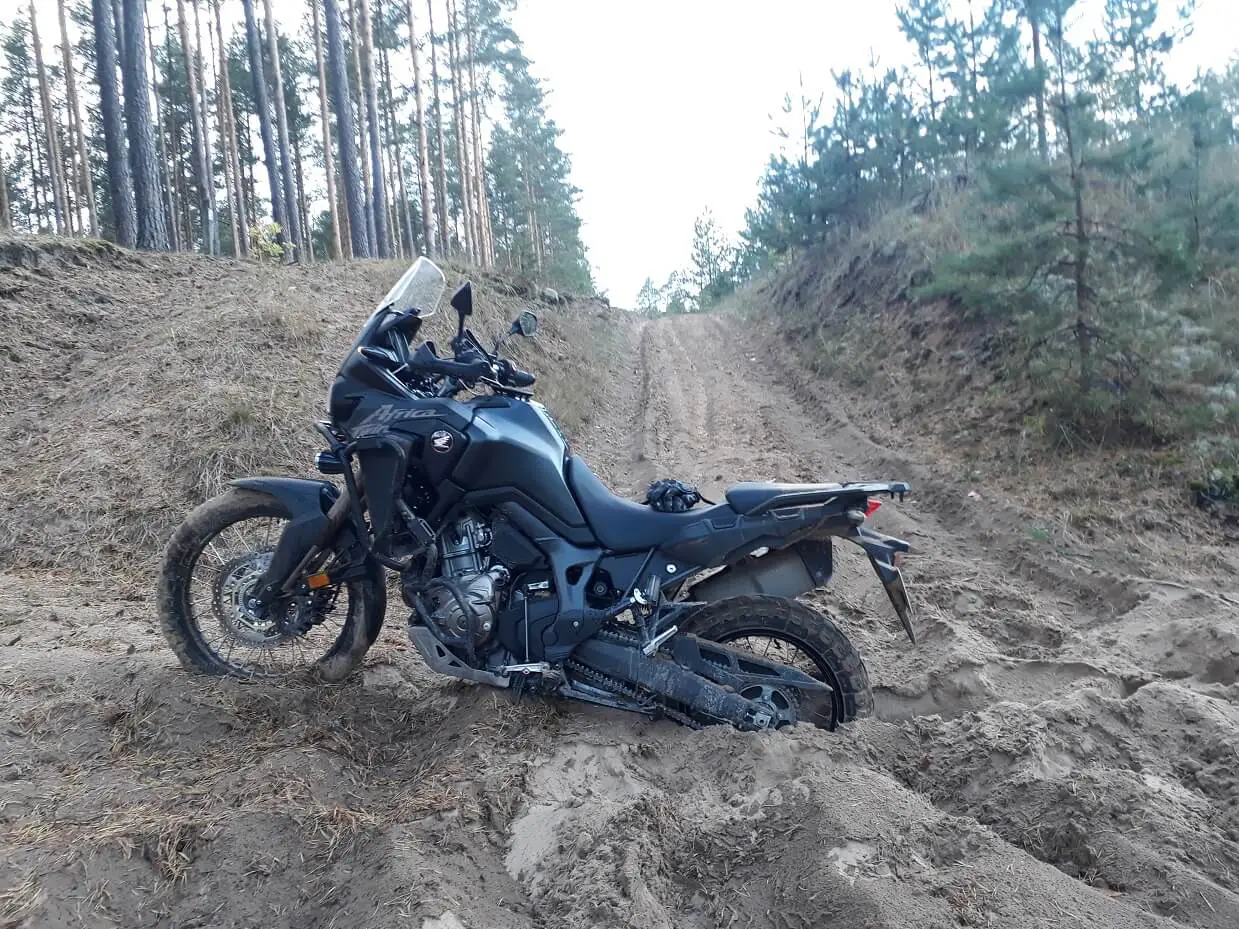
In my opinion, it is better to go with lighter crash bars that would offer the same protection in standstill or slow-speed crashes. Saving even 3kg might make all the difference when you have to pick up the bike yourself. And in some cases, this extra weight is the reason you crashed in the first place.
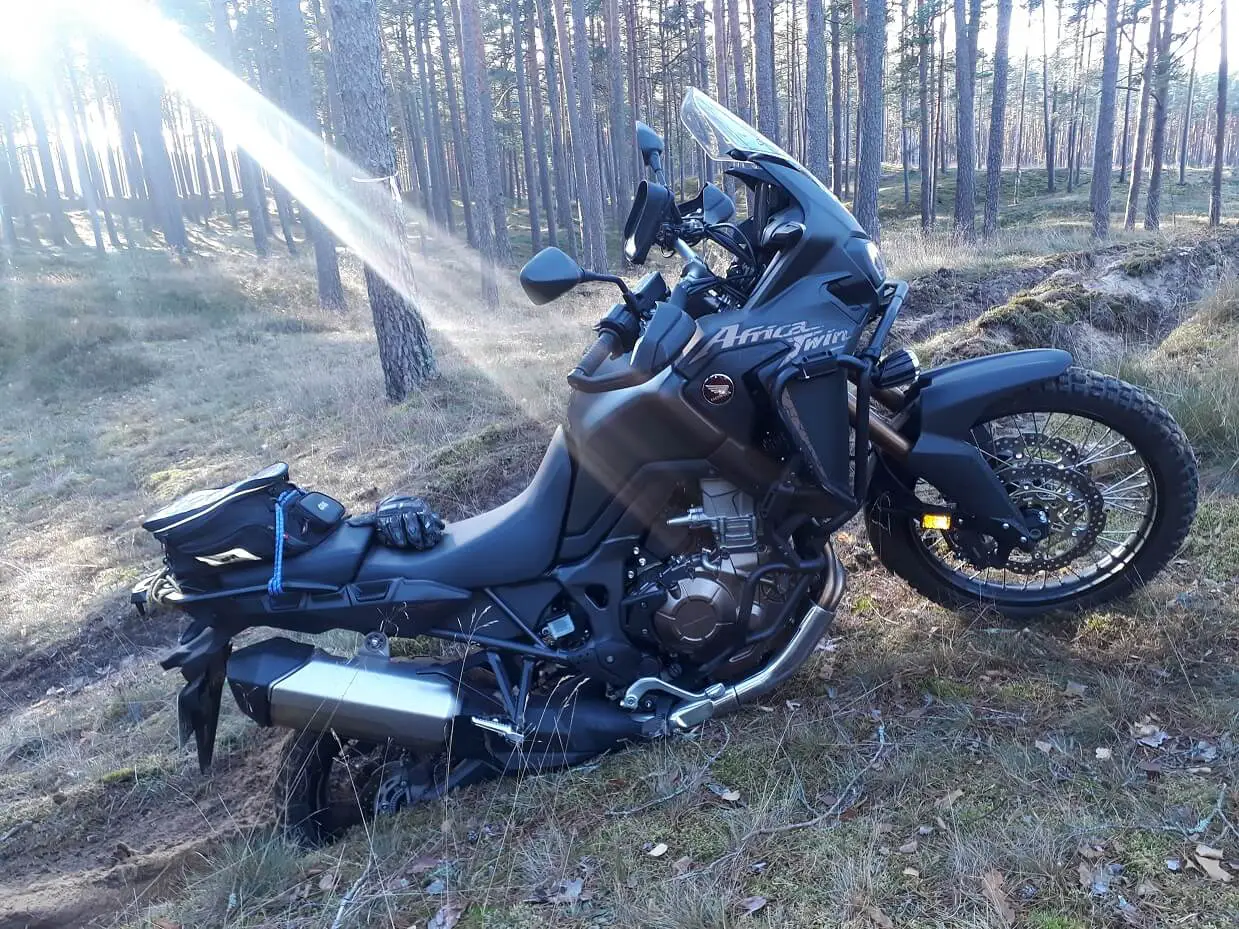
Africa twin reliability
I had zero technical issues with Africa Twin over 2 years and 99k km that were not my own fault.
Africa twin engine
The engine is a liquid-cooled 998cc parallel twin with a 270-degree crank. That means that the engine has amazing torque at low rpm. This is convenient for off-road riding in the sand or technical terrain.
Additionally, I loved the engine performance on the highway. Cruising at speeds of 110-130 km/h the engine operates smoothly, maintaining 3800-4500 revs at these speeds. The fuel efficiency is decent too, at 4.5-5 liters per 100 kilometers, allowing me to cover 300 kilometers between fuel stops with an extra 100 kilometers in reserve – a great feature for touring. I’m quite pleased with my decision to go for the basic AT model over the Adventure Sports version. While the latter’s larger fuel tank and additional 100 km range are appealing, it doesn’t quite make up for the increased width, height, and weight, which aren’t ideal for my needs.

The engine works perfectly up to this day with 0 engine-related issues. I did service the bike twice more often than is recommended in the manual. For example, Honda recommends changing the engine oil every 12k kilometers in the manual. I prefer to change engine oil every 6k km.
Africa twin suspension
I’m genuinely pleased with the suspension. While it may not quite match the performance of KTM or GS models, it handles rough terrain effectively. When I compare it to my previous motorcycles, the suspension on the Africa Twin stands out as exactly what I was looking for and is well worth the money. It significantly surpasses the stock suspension of any mid-weight adventure bike from 2018.
The only slight issue I’ve encountered is with the rear shock preload adjuster, which has become a bit stiff and challenging to operate with just one hand. I believe a thorough cleaning, lubrication, and possibly a reassembly should restore its smooth function.
Although some riders opt to replace the rear shock, I find the stock shock meets my needs perfectly. I have no plans to replace it unless it fails.
Unexpected repairs
The most expensive part that I broke was the front wheel. I managed to bend the rim beyond repair and had to buy a new one. This is entirely my fault and has nothing to do with bike reliability. The funny part is that I bent the front wheel rim while riding in the city and not in the forest.
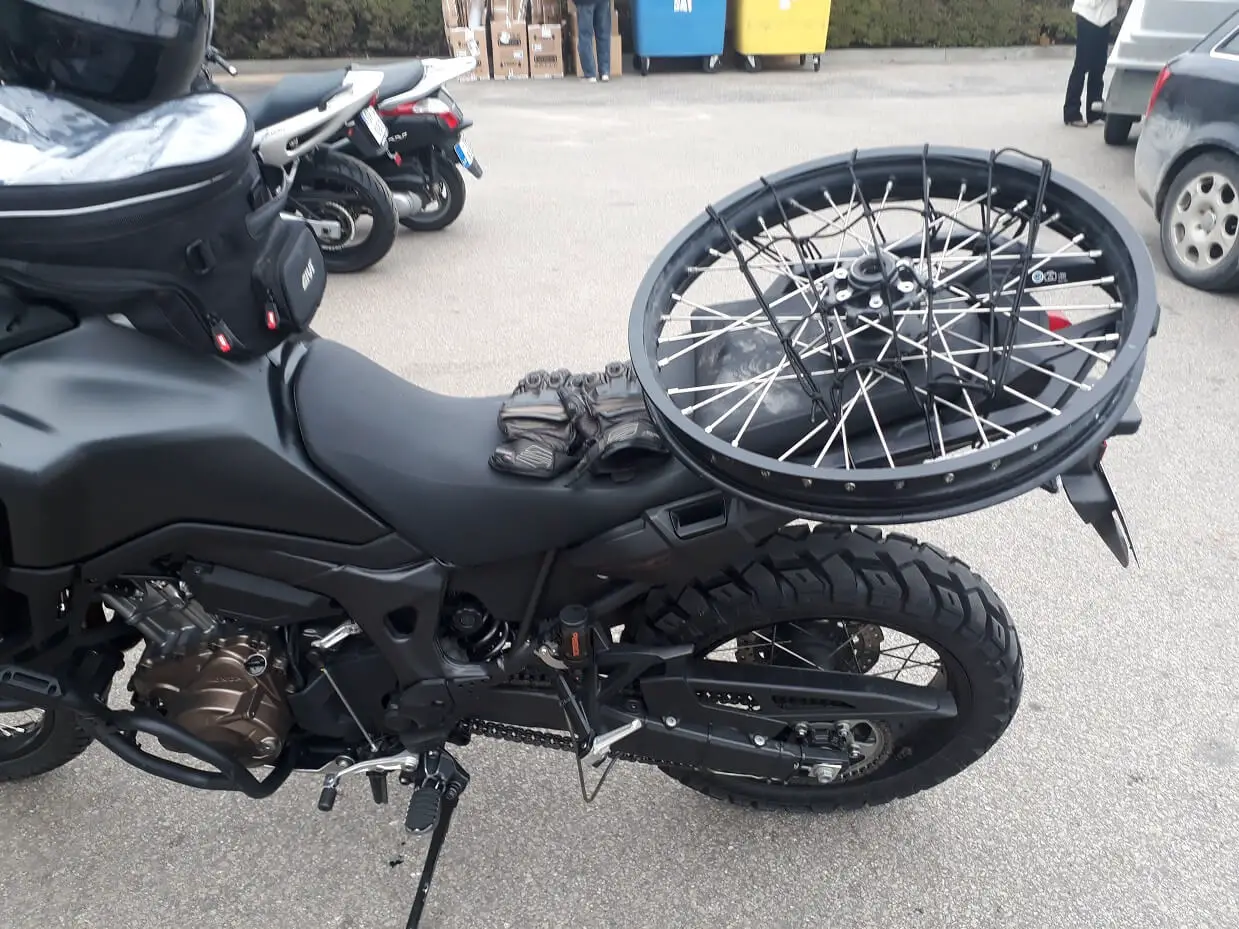
Africa Twin servicing costs
I did most of the servicing myself. It is not the easiest motorcycle to work on since it is not a naked bike. For example, replacing air filters is a 2-hour job that requires taking of crash bars and side plastic panels. Replacing spark plugs would require taking off the radiators.
I still managed to do most of the servicing myself. I even replaced the fork oil myself at 25k km. The only part I was afraid to do myself was valve adjustment. I checked Valves first time at 80k km at the dealer and they were ideal within the spec so no adjustment was needed.
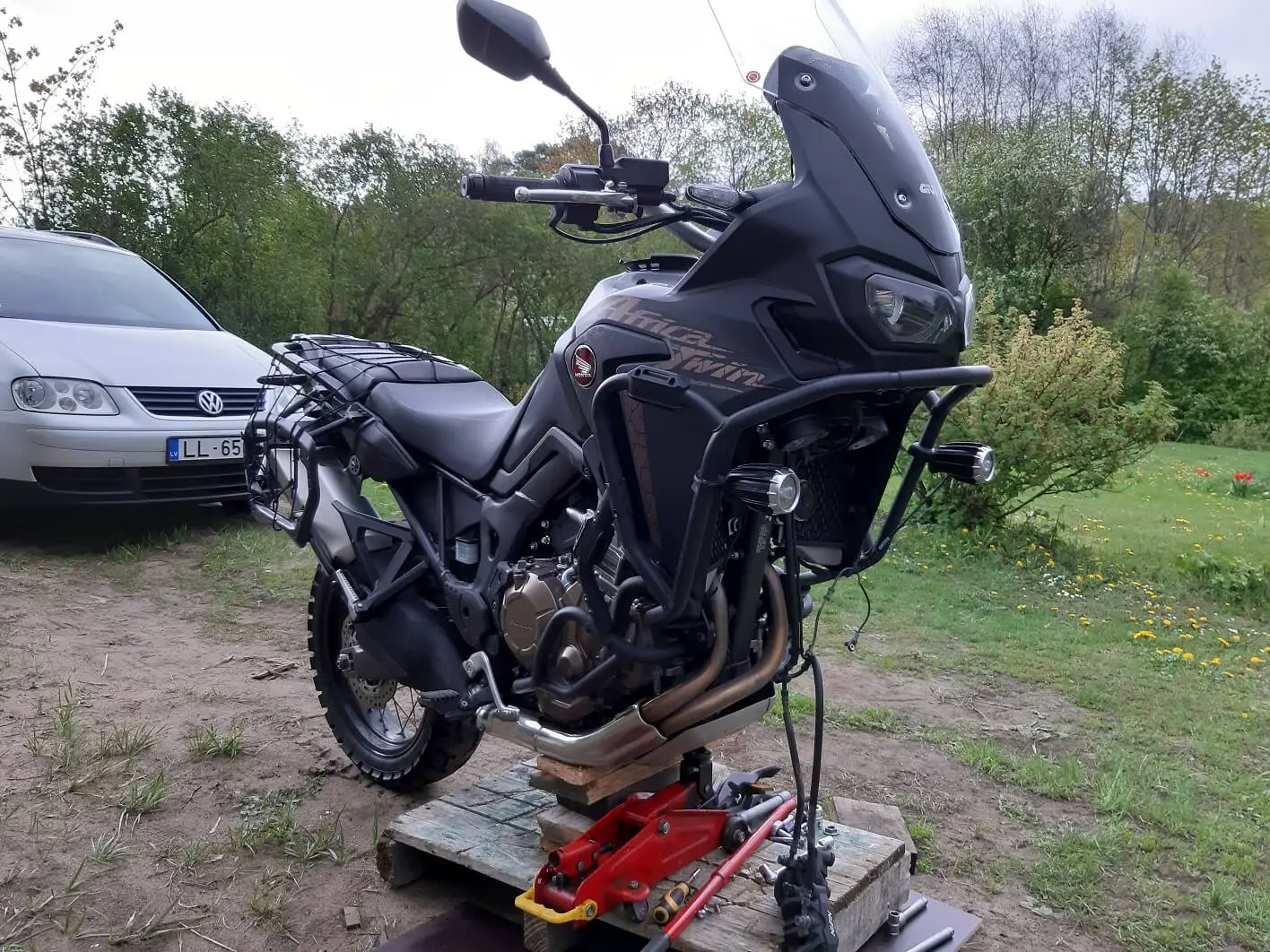
Africa twin as an all-rounder
I am from Latvia. The northern part of Europe. Usually, we have 3 months of below-zero temperatures with snow and ice on the roads. Also, the roads are treated with salt during winter to melt ice. Unfortunately, salt also corrodes metals fast.
Because I am a motorcycle addict and I can not handle 3 months without riding my bike, I decided to ride it occasionally in the winter.
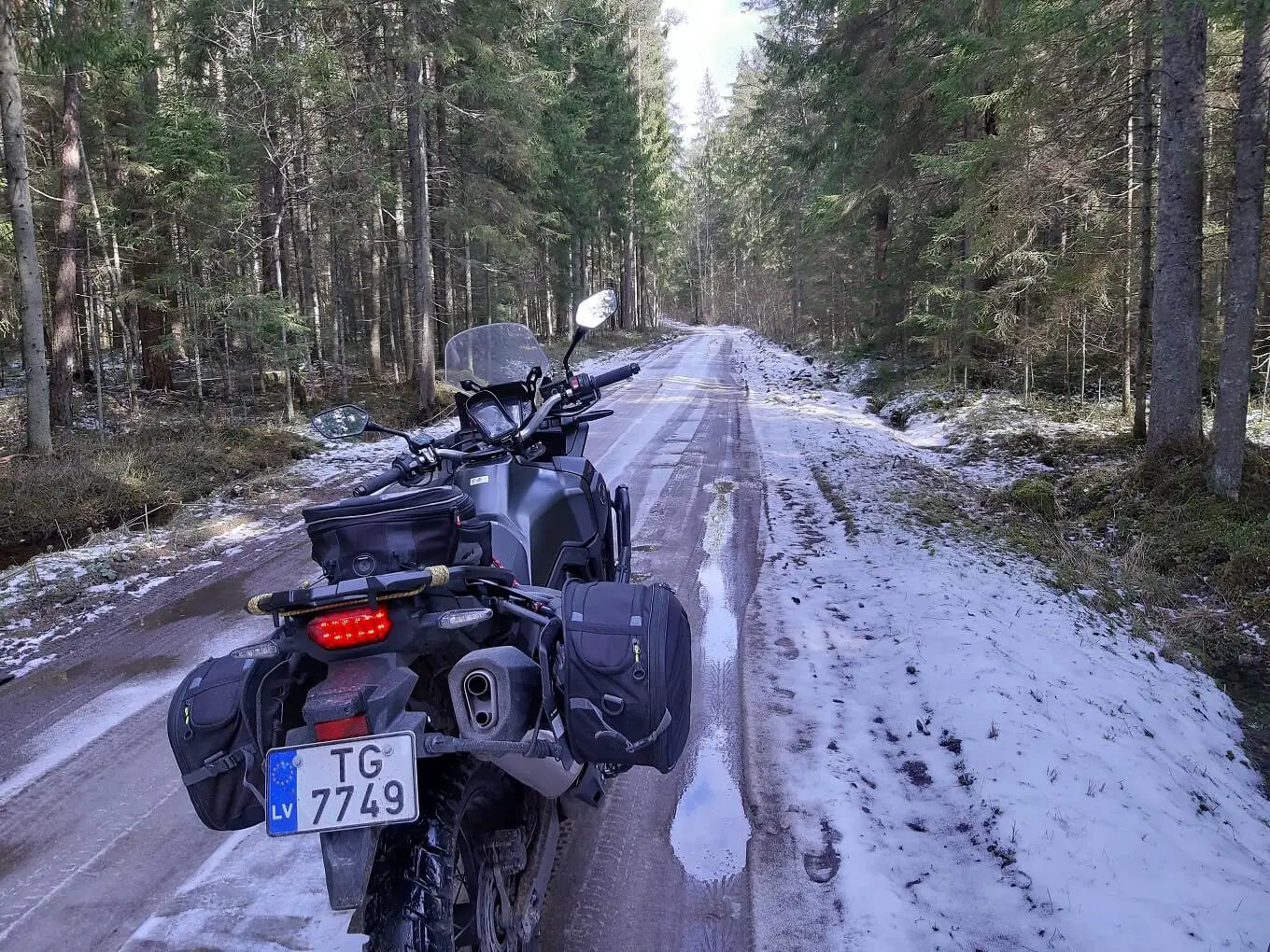
Despite diligently washing the bike after each ride, I noticed rust spots beginning to appear on the lower parts of the frame. It was crucial to address these immediately to prevent further corrosion. However, this issue was relatively minor in the grand scheme of things.
Overall, the bike has impressively withstood all the challenges and rough treatment it received from me. As someone who is not particularly experienced in navigating slippery terrain, I’ve found the Africa Twin to be a great asset. It significantly enhances my modest skills, making it easier to handle such tricky conditions.
Brian from Fortnine explained how engines with uneven firing orders enhance rear wheel traction. This design allows the wheel to regain traction during the longer pauses between firing pulses, which in turn improves the rider’s ability to sense and maintain traction. From my experience, I can confirm that drifting on the Africa Twin is remarkably easy. The ease with which a complete novice can power slide on the Africa Twin is a testament to the bike’s capabilities, particularly in winter riding conditions. This feature enhances the bike’s versatility and user-friendliness in challenging environments.
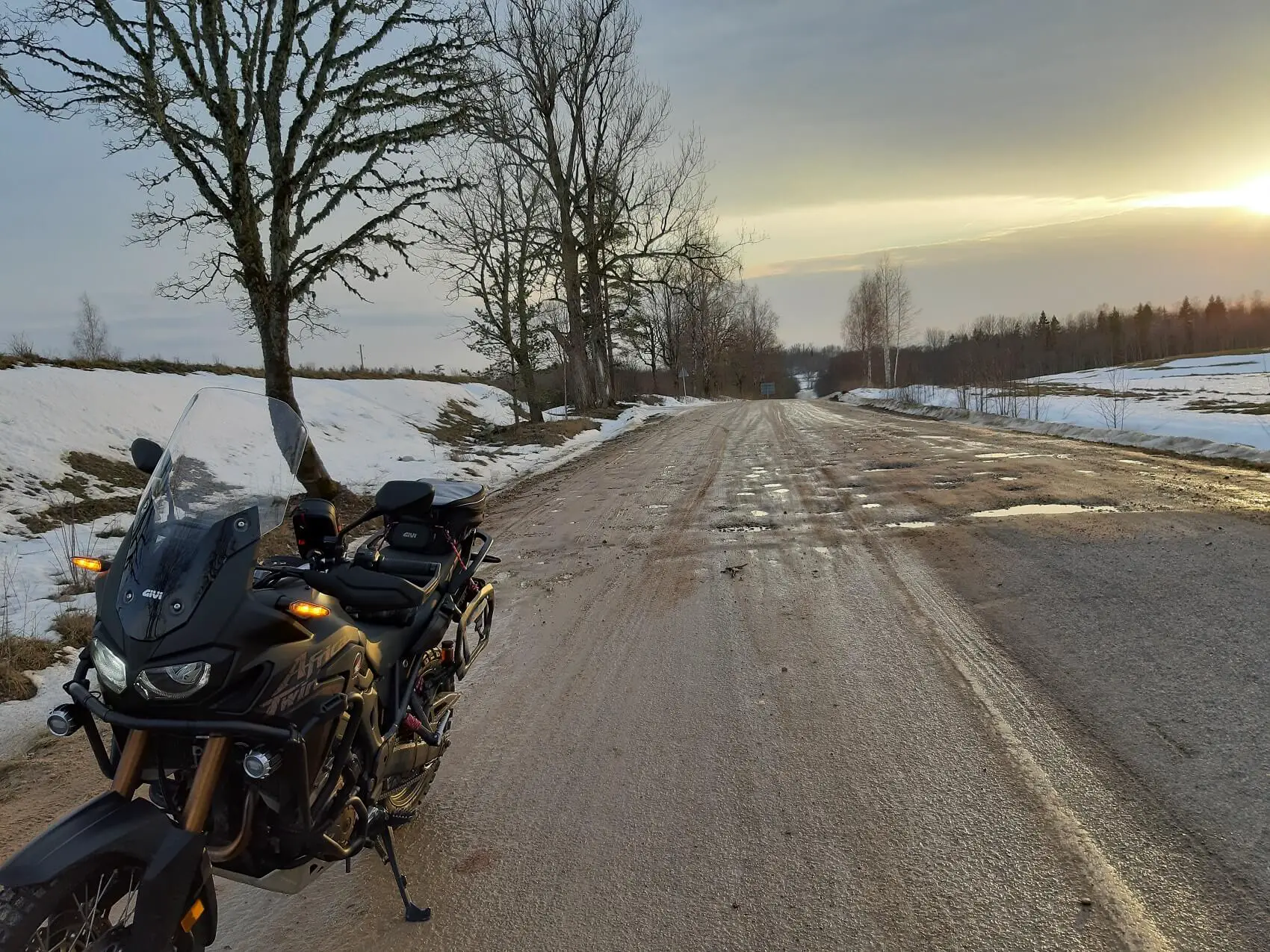
Conclusion
I’m thoroughly satisfied with the Africa Twin, despite some criticisms found in online reviews about the lack of cruise control and the use of tubed tires. In my extensive riding experience, covering 99,000 kilometers (approximately 60,000 miles) in the last three years, I’ve never encountered a tire puncture.
Additionally, wrist fatigue has never been an issue for me, even without cruise control. The use of Oxford heated grips on my bikes, which I sometimes even turned on during summer, likely contributed to this comfort.
The electronic throttle that Honda introduced in 2018 is a feature I particularly like. Its integration with the traction control system is outstanding, enhancing the bike’s performance on gravel, wet roads, and even snow and ice. The bike delivers everything it promises and I would happily buy it again.
P.S. Here are some more photos.

